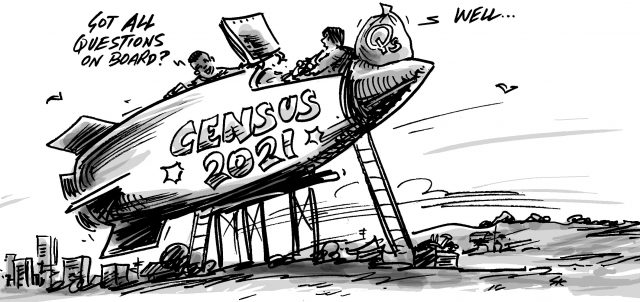The Census is a massive, complicated undertaking. In this blog, Glenn takes a look at how the ABS has been exploring the use of administrative data to improve the Census response rate and the Census count, and create a safety net for any unforeseen issues with data collection.
Conducted every 5 years to get an accurate count of Australia’s population and characteristics, the Census is Australia’s most important data collection and the largest peacetime logistical exercise. It’s integral to what we do at .id – we’ve been working with Census data and helping Local Government make sense of the stories it tells about our communities for the past 23 years. In that time we’ve worked with data from 6 Censuses, from 1991 to 2016, and all are still included in our local government Community Profiles.
What might change with the way the ABS uses administrative data this Census?
Census 2021 is fast approaching, and we’ll be blogging more about it as it gets closer. The ABS recently released a paper entitled “Assessing administrative data quality to enhance the 2021 Census”. Though it might not sound like much, this is a profound change to the way Censuses are run. They are talking about initially using records such as Medicare and Tax office, Centrelink data to ensure they reach everyone on Census night to fill in a form. This includes things like ensuring the address register is up to scratch. This has been done to a limited extent in previous Censuses. But with most Census forms and online codes mailed out now this is very important. (It used to be a manual process where one Census collector would find every household in a given area.)
They also mention “Help us prepare for any unexpected events” that could impact the Census response. This includes things like bushfires (unlikely in August), floods and other natural disasters, and of course COVID-19. Should we have a spike in the virus during the Census collection phase this would severely impact the count, as many non-responding households are followed up in person. In the Census Test conducted in late October, households in Warrnambool, Victoria, participated in the Census entirely electronically and remotely, with no in-person followup, while other processes were used in other parts of the country.
What can we learn from New Zealand’s recent Census?
So ABS is leaving the door open to using administrative records to account for people missing in the Census. While not the primary means of data collection, this is something New Zealand had to do with their 2018 Census, when it was discovered that there was a very low response rate from some areas and segments of the population. As they scrambled to find a way to supplement this data, Stats New Zealand had to delay the release of Census data for some time, but the result of it is in some ways better than ever – certain topics have virtually no “Not Stated” answers now, as they are supplemented by the administration datasets.
Administrative records have always been used to adjust the Census counts to estimate the population – eg. adding in people overseas on Census night based on passenger card information. But this is the first time the ABS has left the door slightly ajar to including admin records as part of the Census itself. It’s clearly not the first choice, but they’ll do it if they need to, using the New Zealand experience as a template.
What is the ABS’s assessment of administrative data?
The main gist of the article is that using the three main governmental administrative datasets can be used to substitute for Census data, as they are generally a very good match to the total population, but it does vary by area and by age group. For example, Census is known to undercount 18-24 year olds who tend to be mobile and often not very interested in filling out the form, while it overcounts those in their late 60s a little. But we’re talking fractions of a percentage point of difference. They also note that administrative counts are not good at capturing the international student population (presumably as they don’t register for government services); the Census does a better job of this.
Administrative records can also be used to better estimate the number of unoccupied dwellings on Census night. In 2016 this was 10.5% of all dwellings, over a million of them – but it can be hard to work out for each dwelling whether it’s occupied or unoccupied, if a form isn’t returned – and different procedures in past Censuses have resulted in quite different counts of these which makes it hard to see important trends to answer questions such as “Are our baby boomers retiring into holiday homes?”.
Whatever improvements are made to the count, we will ensure that they are included in our Community Profiles, and a consistent time series is maintained. Part of the work we do is keeping on top of such changes, so you can get on with using the data to tell the story of your area. Watch this space in the lead up to the 2021 Census.









